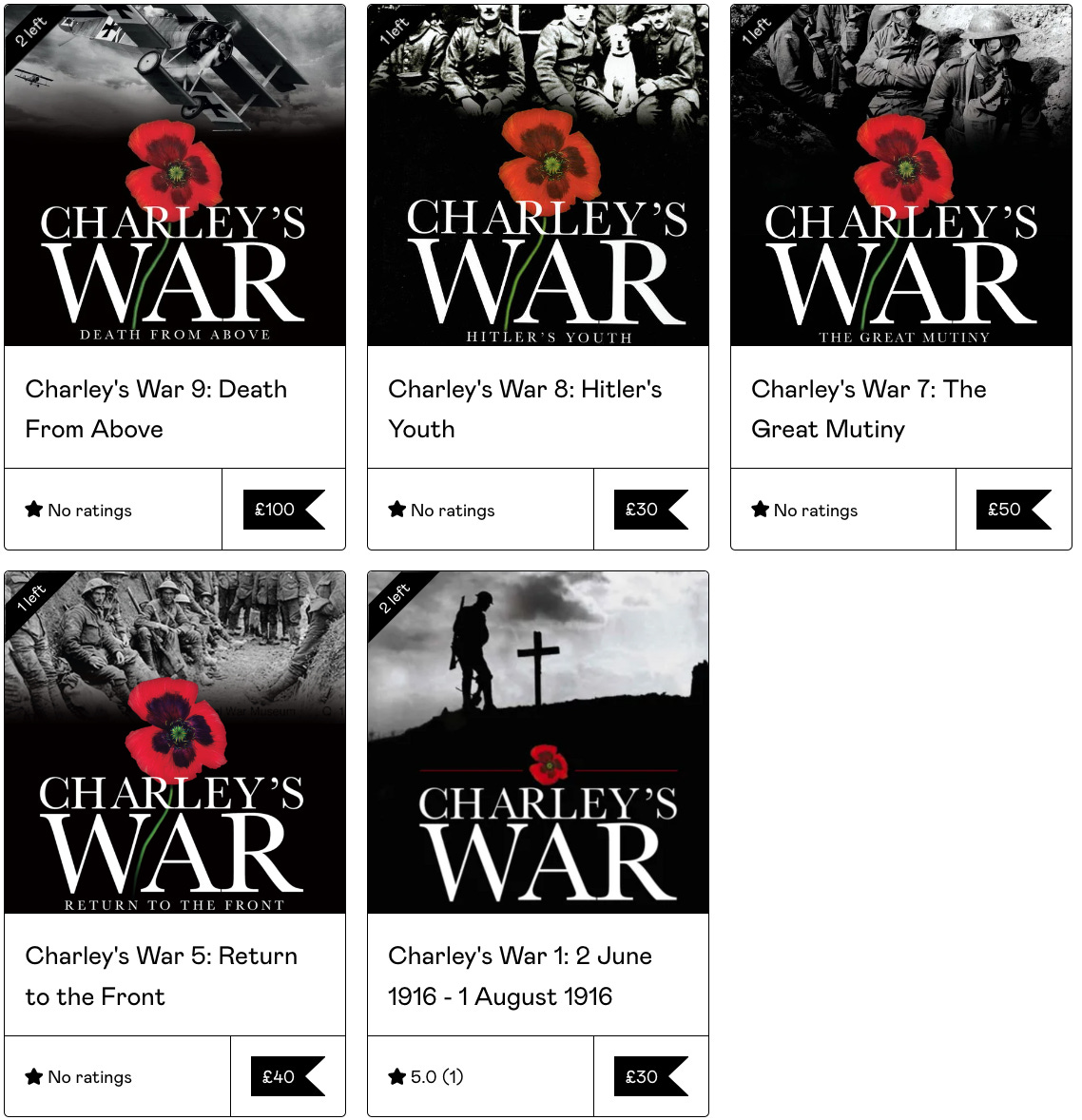Secret History: Charley's War - Cavalry Charge/13th Runner
The case is made that the Dardanelles campaign and its incompetent commander were designed to fail
Welcome to my Secret History of Comics: my new book that I am serialising on Substack. The first section was on Marshal Law, and now it’s all about Charley’s War.
If you’re joining me for the first time, you can read the intro to the Secret History here, it’s available for everyone, as is the intro to Charley’s War.
Every subsequent post has a free preview, but the full post is for paying subscribers only, so if you’d like full access to ALL of my Secret History of Comics as I release it every week (plus other benefits, check them out), please consider subscribing: it’s £5 per month or £50 per year, and it helps me to continue giving you my best writing. I’m offering a free seven-day trial on Iconoblast, so you can try it first.
Before we get into it, I’ve actually got a small selection of signed copies of the Titan edition of Charley’s War for sale over on my Gumroad store. They’re not mint condition as they’ve been on my shelves and in boxes for a few years, so the covers have the odd scuff or scratch, but the interior pages are in good nick.
The Cavalry Charge
After the first day on the Somme, I next set up the plot to feature the last cavalry charge and also flashback to the Christmas truce of 1914. For those interested in the truce, I thoroughly recommend the film Joyeux Noel.
Its modern counterpart today seems to have failed for the same reason there were no more official truces in the Great War.
President Putin ordered his troops to stop because he had listened to an appeal from the head of the Russian Orthodox Church…Patriarch Kirill had, earlier in the day, called for a Christmas truce to allow believers to attend services for Orthodox Christmas…But in his nightly video address, President Zelensky said that Russia wanted to use the truce as a cover to stop Ukrainian advances in the eastern Donbas region and bring in more men and equipment.
Whatever the validity, and I have no knowledge or insight either way, similar arguments were used to put an end to Christmas truces in the Great War.
Meanwhile, our hero Charley and his mate Ginger had to bear witness to one of the last great cavalry charges, not least to show – at the end of Episode 24 – the nightmarish figure of a gas-masked British horse and rider, one of the most iconic scenes in the series. In the charge, I featured a warhorse called Warrior, based on an old book I had discovered: Warrior: The Amazing Story of a Real War Horse by General Jack Seely. Some years later, when there was the film and play Warhorse, the book was reprinted.
Marcus White has made an impressive diorama of that historic cavalry charge as well as Smith 70 and Young Albert, the machine gunners. Marcus tells me that eight million horses and ponies never made it home from WW1.
Organisations like the Western Front Association and the National Army Museum try to put a positive spin on Haig and also justify his use of cavalry.
The museum concludes:
More recently, writers like John Terraine, Gary Sheffield and William Philpott have re-assessed Haig's contribution to winning the war. But despite their best endeavours, the popular view is still one of an incompetent commander.
Keep reading with a 7-day free trial
Subscribe to Iconoblast to keep reading this post and get 7 days of free access to the full post archives.





